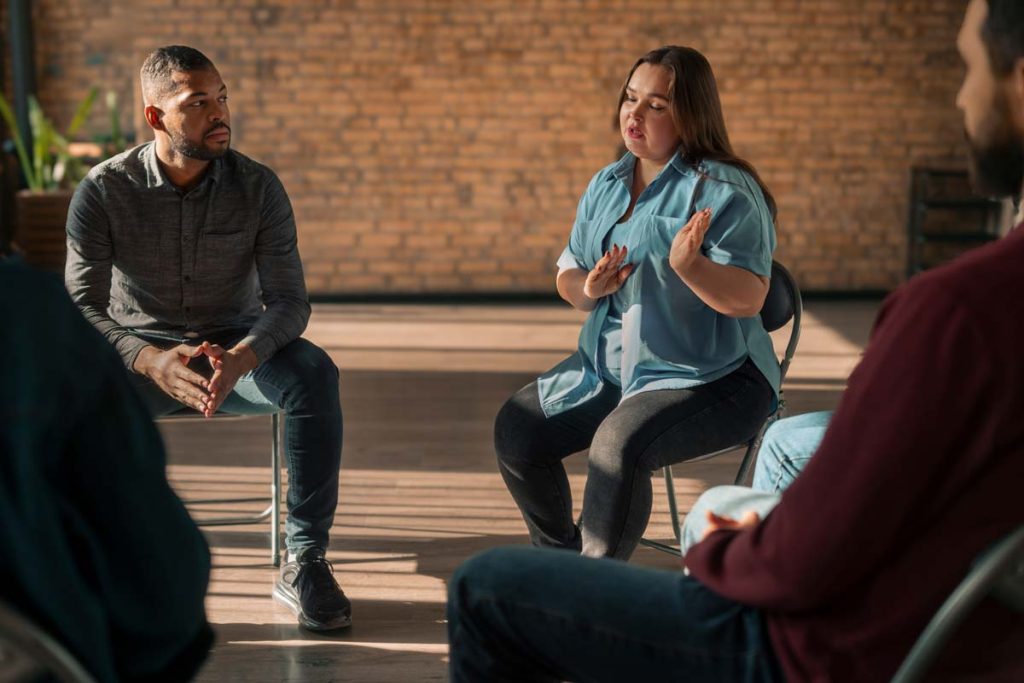Drug abuse affects people in different ways. Some have a long history of substance abuse, while others may be fighting a newer addiction that came on suddenly. In any case, different forms of treatment are best for different people. Every person has a different background, a different set of needs, and a different level of readiness. That’s why having multiple treatment paths is so important. The best option for one person may not work for another—and that’s okay. Some need a safe place to detox. Others benefit from a structured, residential setting. Many do well with the flexibility of outpatient care. Ultimately, what matters most is finding the treatment that works best for each person because recovery looks a little different for everyone.
1. Medical Detox
One of the most common and necessary steps in addiction treatment is medical detox. For many, starting treatment is the first step that helps make the rest of the process more manageable. Detox is the process of clearing drugs or alcohol from the body, and while it may sound straightforward, it’s often anything but simple.
Why Detox Is Necessary
Substances like fentanyl, alcohol, and benzodiazepines can trigger intense withdrawal symptoms—both physical and psychological. These can include anything from nausea, shaking, and sleeplessness to panic attacks, hallucinations, and even seizures. Trying to detox alone can be dangerous and, for some, even life-threatening.
What to Expect During Detox
At Capistrano Beach Recovery, detox is done under close medical supervision. Our team monitors each client 24/7, and medications may be used to reduce discomfort and prevent complications. But it’s not just about the physical side—we also provide emotional support, reassurance, and a calm space to rest and reset.
2. Inpatient Residential Treatment
Inpatient rehab provides something that’s often hard to find in everyday life: space. Space to reflect, reset, and recover without the usual triggers or chaos. At Capistrano Beach Recovery, clients live on-site in a regulated environment where each day is intentionally shaped to support progress. It’s not just about having a roof over your head—it’s about stepping into a setting where healing is the main focus.
Why This Setting Matters
Residential treatment removes distractions and allows for total focus on getting better. With fewer external stressors, people often experience more emotional clarity, which opens the door to meaningful therapeutic work. Having daily routines and access to a support team helps create consistency—something that’s often missing in active addiction.
A Closer Look at Daily Life
Each day in residential care is structured with a blend of therapies, wellness activities, and downtime. Clients might engage in:
- One-on-one therapy to address personal challenges and underlying emotional pain
- Group sessions for connection, peer support, and shared learning
- Family involvement programs to help rebuild trust and communication
- Creative and holistic therapies, including art, music, or movement
- Mental health support, especially for those with co-occurring disorders
Clinical staff are available around the clock, offering both emotional and medical support whenever it’s needed.
Who Benefits Most from Inpatient Rehab?
While inpatient care can help anyone, it’s particularly effective for those who:
- Have relapsed after previous attempts at recovery
- Don’t have a stable or supportive living environment
- Are managing both addiction and a mental health condition
- Need space away from triggering people, places, or situations
By combining structure with genuine human connection, inpatient treatment helps people rebuild trust in themselves and others. It lays the groundwork for sustainable recovery—not by offering quick fixes, but by creating an environment where growth becomes possible.
3. Outpatient Programs
Outpatient treatment is a practical, flexible option for people who want consistent support without stepping away from their everyday responsibilities. Whether you’re moving forward after inpatient rehab or starting fresh with less intensive care, outpatient programs let you stay connected to treatment while living at home or in sober housing.
Why Outpatient Treatment Works
This level of care blends structure with independence. Clients attend therapy and programming on a scheduled basis but continue to engage with work, school, or family life outside of treatment hours. It’s a setup that lets people test new coping strategies in the real world—while still having a solid support system in place.
Levels of Outpatient Care at Capistrano Beach Recovery
Not all outpatient programs are the same. We offer multiple levels to fit different stages of recovery:
Partial Hospitalization Program (PHP):
A full-day treatment option that offers clinical support, therapeutic groups, and individual counseling. PHP is ideal for those who need steady reinforcement and accountability but don’t require 24/7 supervision.
Intensive Outpatient Program (IOP):
A step down from PHP, IOP typically involves therapy several days per week. It’s designed to provide focused care while offering more room for outside responsibilities.
Standard Outpatient Program:
A lighter schedule focused on continued growth and relapse prevention. This level is ideal for those who’ve built a solid foundation and are ready to maintain it over time.
Who Benefits from Outpatient Treatment?
Outpatient care can be a strong fit for people who:
- Have completed residential treatment and want continued support
- Live in a stable home environment that reinforces sobriety
- Have work, school, or family obligations that make full-time treatment unrealistic
- Feel ready to apply what they’ve learned while still staying connected to clinical guidance
What Makes It Effective
Outpatient treatment gives clients room to grow without losing access to care. It supports the development of real-world coping skills and allows space to build healthier routines in a familiar environment. The goal isn’t perfection—it’s progress. And with the right support system, that progress becomes far more sustainable.
Developing a Treatment Plan That Fits
No two individuals experience addiction in the same way. That’s why every treatment plan for substance abuse needs to reflect each person’s reality.
What Goes Into a Treatment Plan?
At Capistrano Beach Recovery, treatment plans are crafted based on:
- Type and length of substance use
- Physical and mental health history
- Living environment and daily obligations
- Individual goals and preferences
Clients may participate in:
- Cognitive Behavioral Therapy (CBT)
- Dialectical Behavior Therapy (DBT)
- Medication-Assisted Treatment (MAT)
- Relapse prevention strategies
- Support group meetings
This personalized care creates a supportive, focused environment. It addresses both the visible symptoms and the deeper causes behind substance use.
Fentanyl Crisis and the Urgency of Specialized Care
Fentanyl has become a leading cause of overdose deaths in recent years. This synthetic opioid is significantly stronger than morphine and can be lethal even in small doses.
Why Specialized Care Matters
Fentanyl addiction can progress rapidly, and withdrawal symptoms can be extreme. That’s why detox and treatment for fentanyl users must be done in a setting with experienced medical professionals. Capistrano Beach Recovery provides specialized support for those struggling with fentanyl, prioritizing safety and stabilization from day one.
Why Capistrano Beach Recovery?
We at Capistrano Beach Recovery aren’t just a facility—we are a community that wants to give anybody who is ready to make a change the practical solutions they need to stay healthy and sober. Our center blends professional expertise with compassion.
Our team believes in:
- Meeting clients where they are
- Offering practical support every step of the way
- Promoting lasting recovery through real-life strategies
Whether someone is starting with detox or stepping down into outpatient care, we walk alongside them to create progress that sticks.
Call Capistrano Beach Recovery
Recovery begins with action. Choosing the right treatment plan can be the beginning of a new chapter. Whether you’re exploring options for yourself or someone close to you, we at Capistrano Beach Recovery are here to help.
Share this blog with anyone who could benefit from learning more about drug abuse treatment. If you have questions or need immediate support, contact us today. Your next step starts here.
Frequently Asked Questions (FAQ)
Drug abuse treatments include detox, therapy, and structured programs that help individuals stop using substances and build healthy coping skills.
Our center offers personalized treatment plans, experienced staff, and multiple levels of care, all in a supportive and calm environment.
Yes, we offer specialized detox and therapeutic support for fentanyl users, with a focus on safety and long-term recovery.
Treatment length varies. Detox may last a few days, inpatient rehab often lasts 30–90 days, and outpatient care can extend for several months.
No. You’ll be surrounded by professionals and peers who are committed to growth, healing, and achieving real change.



